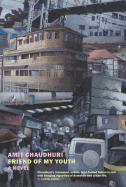
In Friend of My Youth, narrator Amit Chaudhuri--not to be confused with the novel's author, Amit Chaudhuri--returns to Bombay, his childhood home, on a book tour. Perhaps even more disconcerting than the city's subtle changes in the wake of 2008 terrorist attacks is the absence of Amit's childhood friend Ramu, who has become more representative of Amit's past than even the city itself. Ramu, while remaining tethered to the place of their youth, has become untethered from the world at large through his deepening drug addiction. In grappling with his lingering loyalties to Ramu, Amit must also consider the ways a person as well as a place can exist across many moments in time.
Like Chaudhuri's other literary projects, Friend of My Youth experiments with form, from the mirroring of the novel's author in its protagonist to the narrator's explicit rejection of the term autobiography. Just as the boundaries of reality and fiction become diffuse in Chaudhuri's telling of Amit's story, his two subjects--Bombay and Ramu--ultimately also combine into a single being of simultaneous existence. Chaudhuri seamlessly draws these parallels through his intricate descriptions of everyday minutiae. Through his kaleidoscopic prose, for instance, the lobby of a hotel suddenly, brilliantly becomes a portal into understanding looped time, in which a happy ending is superseded by a new arrival. In this way, Chaudhuri's writing has a tendency to burrow into the reader's own daily experiences, a tendency that Chaudhuri himself describes as the way "novels begin for me. There's a convergence. I live. Then something prompts me to write. The writing is not about life. It is a form of living. The two happen simultaneously." --Alice Martin, freelance writer and editor

